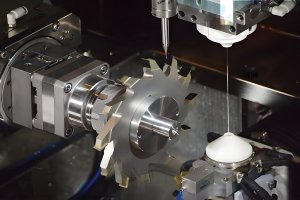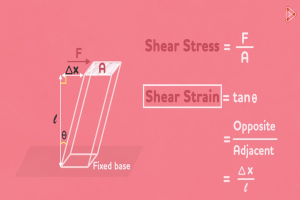Choosing the right plastic fabrication process can determine the success of your product, the efficiency of your supply chain, and your overall costs. Whether you’re procuring plastic parts for a high-volume production line or developing custom components, understanding the benefits and limitations of Injection Molding versus CNC Plastic Fabrication is essential.
This guide will help you navigate these two common plastic manufacturing processes, explore when each is most appropriate, and show how to select a supplier that meets your needs.
Overview of Plastic Fabrication Methods
Plastic Fabrication involves transforming raw plastic materials into final parts through various processes. It plays a key role in numerous industries, including automotive, medical, aerospace, consumer goods, and electronics. Choosing between Injection Molding and CNC Plastic Fabrication often depends on the complexity of the part, production volume, and the specific requirements of the material.
Injection Molding
Injection Molding is a high-volume production process where molten plastic is injected into a mold cavity, cooled, and solidified. It’s used extensively to produce identical parts in mass quantities, especially when tight tolerances and consistent quality are critical.
CNC Plastic Fabrication
CNC (Computer Numerical Control) Plastic Fabrication involves cutting, drilling, and shaping plastic materials using computer-controlled machines. CNC offers unparalleled precision and flexibility, making it ideal for custom parts, low-volume runs, and prototyping.
Differences Between Injection Molding and CNC Plastic Fabrication
Understanding the key differences between Injection Molding and CNC Plastic Fabrication is essential for selecting the right method for your project. These processes differ significantly in terms of production volume, cost structure, precision, and material flexibility.
| Factors | Injection Molding | CNC Plastic Fabrication |
|---|---|---|
| Production Volume | Best for high-volume production (10,000+) | Ideal for low-volume production and prototyping |
| Cost Per Unit | Low for large runs, but high initial tooling cost | Higher per unit cost but no tooling investment |
| Setup Time | Longer setup due to mold creation | Shorter setup, easy to switch designs |
| Material Flexibility | Can use a wide range of plastic materials | Limited to machinable plastics (e.g., ABS, acrylic) |
| Precision | High consistency, especially for complex designs | Higher precision for small, intricate parts |
| Lead Time | Longer due to mold creation | Shorter, can produce parts quickly |
Production Volume
One of the most notable differences is that Injection Molding excels in high-volume production, making it ideal for mass production of plastic parts. CNC, on the other hand, is better suited for smaller production runs or prototyping, as it offers flexibility without the need for expensive mold creation.
Cost Structure
Injection Molding requires a significant initial investment in creating the mold, but the per-unit cost decreases significantly as volume increases. In contrast, CNC Plastic Fabrication avoids mold costs altogether but tends to have a higher cost per unit due to the time-intensive nature of machining.
Precision and Flexibility
Both methods provide high precision, but CNC is often preferred for intricate, custom parts with tight tolerances, especially in industries like aerospace and medical devices where precision is paramount. Injection Molding is ideal for producing complex designs once the mold is set up, but it lacks the flexibility to make rapid design changes like CNC.
Choosing the Right Process Based on Material Considerations
When selecting between Injection Molding and CNC Plastic Fabrication, the choice of material plays a key role. Each method works best with certain types of plastics.
Materials Suitable for Injection Molding
Injection Molding offers a wide variety of materials, including:
- Polypropylene (PP)
- Polyethylene (PE)
- Polyvinyl Chloride (PVC)
- Nylon (PA)
- Acrylonitrile Butadiene Styrene (ABS)
These materials provide flexibility for projects requiring durable, impact-resistant, and flexible parts, such as automotive components, packaging, and consumer products.
Materials Suitable for CNC Plastic Fabrication
In contrast, CNC Plastic Fabrication is limited to machinable plastics like:
- Acrylic
- ABS
- Nylon
- Delrin (POM)
- PEEK (Polyetheretherketone)
CNC excels in producing parts from advanced engineering plastics, making it suitable for aerospace, medical devices, and custom prototypes that require precise machining.
Real-World Applications of Injection Molding and CNC Plastic Fabrication
Both Injection Molding and CNC Plastic Fabrication are widely used across industries. Below is a breakdown of how each process is typically applied:
| Industry | Injection Molding Applications | CNC Plastic Fabrication Applications |
|---|---|---|
| Automotive | Dashboard components, trim pieces | Custom precision parts, rapid prototyping |
| Medical Devices | Syringes, IV connectors | Surgical instruments, custom implants |
| Aerospace | Plastic housings, insulation | Lightweight custom parts with tight tolerances |
| Consumer Goods | Toys, electronics housings, packaging materials | Custom enclosures, prototypes |
| Prototyping | Not commonly used for prototyping due to mold costs | Perfect for rapid prototyping and design iteration |
Injection Molding in Automotive
The automotive industry uses Injection Molding for high-volume production of plastic parts such as dashboard components, handles, and interior trims. These parts benefit from the consistency and durability provided by the injection molding process, making it the go-to method for mass production.
CNC Plastic Fabrication in Medical Devices
CNC Plastic Fabrication is commonly used for high-precision components in medical devices, such as surgical instruments and customized implants. The flexibility of CNC machining allows for the production of prototypes and small-batch custom parts that meet strict regulatory standards.
Cost Comparison Between Injection Molding and CNC Plastic Fabrication
To better understand the financial aspects of both processes, let’s break down the costs associated with Injection Molding and CNC Plastic Fabrication for a project that requires 1,000 plastic parts.
| Cost Factor | Injection Molding | CNC Plastic Fabrication |
|---|---|---|
| Tooling Cost | High (~$5,000 – $20,000) | None |
| Cost Per Unit (1,000 units) | Low (~$1 – $5) | Higher (~$15 – $30) |
| Production Speed | Fast (Ideal for large runs) | Slower (Better for small runs) |
| Lead Time | Longer due to mold creation | Shorter, flexible |
| Customization | Limited after mold creation | Easily customizable |
From this comparison, it’s clear that Injection Molding is more cost-effective for large production volumes, while CNC Plastic Fabrication remains the better choice for custom parts or low-volume production where flexibility is key.
When to Choose CNC Plastic Fabrication Over Injection Molding
While Injection Molding is the go-to choice for mass production, CNC Plastic Fabrication offers several distinct advantages that make it the better choice for certain projects.
1. Prototyping and Low-Volume Production
CNC Plastic Fabrication is perfect for prototyping and low-volume production, as it allows for rapid design changes without the need for costly molds. This flexibility enables you to iterate designs quickly, making CNC the ideal choice for early-stage development.
2. High-Precision Parts
If your project requires high-precision parts with tight tolerances, such as medical devices or aerospace components, CNC machining is the superior choice. CNC machines can achieve intricate details that would be difficult or impossible with Injection Molding.
3. Customization and Complexity
For projects that require customization or complex geometries, CNC Plastic Fabrication offers more flexibility. Since there’s no mold, designs can be easily adjusted, and complex features can be machined without the limitations of mold creation.
How to Evaluate a Plastic Fabrication Supplier
Choosing the right supplier is critical to the success of your project. Whether you go with Injection Molding or CNC Plastic Fabrication, here are some tips for evaluating potential suppliers:
- Experience: Look for suppliers with proven expertise in your industry and familiarity with the materials and processes you need.
- Production Capacity: Ensure the supplier can handle your production volume, whether it’s high-volume Injection Molding or low-volume CNC machining.
- Quality Control: Ask about the supplier’s quality assurance processes and how they maintain tolerances and consistency across production runs.
- Flexibility: If your project requires design changes or iterations, find a supplier that can accommodate these needs, particularly if you’re leaning toward CNC.
- Lead Time: Consider how quickly the supplier can deliver parts. CNC typically has faster lead times, but Injection Molding may be necessary for large-scale production.
Finding the Best Process for Your Plastic Parts
In conclusion, the decision between Injection Molding and CNC Plastic Fabrication ultimately depends on your project’s specific needs. For high-volume production, Injection Molding is typically the most cost-effective and efficient option. However, for low-volume runs, custom parts, or when precision and flexibility are required, CNC Plastic Fabrication is the clear winner.
Understanding these differences will help you make an informed choice and ensure that your plastic fabrication project runs smoothly, meets deadlines, and stays within budget.
FAQs:
- Can I use both CNC and Injection Molding for the same project?
Yes, it’s common to use CNC for prototyping and Injection Molding for mass production. - What is the most cost-effective method for low-volume production?
CNC Plastic Fabrication is more cost-effective for low-volume production due to the lack of mold costs. - Is CNC more precise than Injection Molding?
CNC typically offers higher precision, especially for complex or customized parts. - What factors affect the lead time in Injection Molding?
The primary factor is mold creation, which can take several weeks. After the mold is made, production is fast. - Can Injection Molding handle complex geometries?
Yes, but the complexity is limited by the mold design. CNC offers more flexibility for complex parts. - What materials can be used in CNC Plastic Fabrication?
CNC works well with machinable plastics like ABS, acrylic, PEEK, and nylon, but is limited compared to Injection Molding. - Which process is better for prototyping?
CNC Plastic Fabrication is better for prototyping due to its flexibility and lack of upfront mold costs. - What’s the main advantage of Injection Molding?
Injection Molding is highly efficient and cost-effective for high-volume production runs.
Other Articles You Might Enjoy
- Low Volume Plastic Injection Molding: An In-Depth Guide
Low volume plastic injection molding is a manufacturing process used to produce small quantities of intricate plastic parts. This technique is essential in industries requiring unique, high-quality plastic components in…
- CNC Plastic Machining: Custom Finished Parts for Your Project
In most cases, many people will directly understand CNC machining as a metal workpiece machining process. However, the fact is that CNC machining is not only widely used in metal…
- Unraveling the World of CNC Machined Plastic Parts(CNC machined plastic parts Mabel)
Modern innovations have taken traditional manufacturing methods to new heights. One such innovation that stands out is Computer Numerical Control (CNC) machining, a process used extensively in various industries from…
- CNC Machined Plastic Parts: An In-depth Overview(CNC machined plastic parts Norman)
Computer Numeric Control (CNC) machining is an advanced manufacturing process where pre-programmed software dictates the movement of factory machinery and tools. These applications can carry out complicated manufacturing tasks with…
- Enhancing CNC Machining with Smart Alloys: Shape Memory Metals vs. Traditional Alloys
Introduction to CNC Machining Computer Numerical Control (CNC) machining stands as a cornerstone in modern manufacturing, enabling the precise and automated shaping of materials. This technology relies heavily on the…
- Plastic Injection Molding in Medical Manufacturing: Advantages & Disadvantages
Plastic injection molding is used to make many medical products. This manufacturing process is proven reliable and can produce large quantities at low costs per part. Injection molding allows for…






